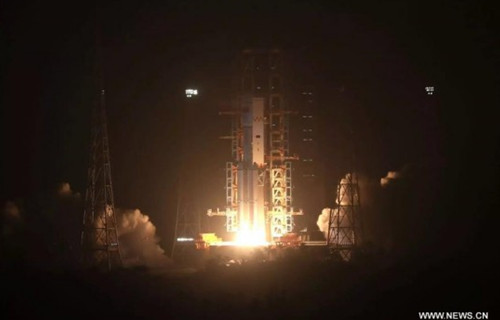导读:本周四海南文昌,中国发射了第一艘货运飞船天舟一号,该飞船未来将承担着中国空间站的“快递员”角色,为空间站提供能源和必须的补给。

China on Thursday evening launched its first cargo spacecraft, Tianzhou-1, into space, a crucial step for the country in building a space station by approximately 2022.
本周四晚中国将第一艘货运飞船“天舟一号”发射升空,而这是中国打算在2022年左右建成自己空间站的关键一步。
Lifted by a Long March-7 Y2 carrier rocket, Tianzhou-1 roared into the air from the Wenchang Space Launch Center in south China’s Hainan Province.
天舟一号搭载的是长征七号Y2运载火箭,在海南文昌航天发射中心咆哮升空。
In space, the cargo ship will dock with the orbiting Tiangong-2 space lab, provide fuel and other supplies, and conduct space experiments before falling back to Earth.
在太空中,天舟一号会和在轨空间实验室天宫二号对接,为后者提供燃料和其他补给,并在返回地球前进行一些空间实验。
China aims to build a permanent space station that is expected to orbit for at least 10 years, and the debut of the cargo ship is important as it acts as a courier to help maintain the space station.
中国的目标是建立一个可以在轨运行至少10年的永久空间站,而货运飞船的登场显得尤其重要,因为它将承担着维持空间站运作的“快递员”作用。
Without a cargo transportation system, the station would run out of power and basic necessities, causing it to return to Earth before the designated time.
如果没有货物运输系统,空间站就会耗尽能源和其他基本必需品,从而导致在指定时间之前返回地球。







